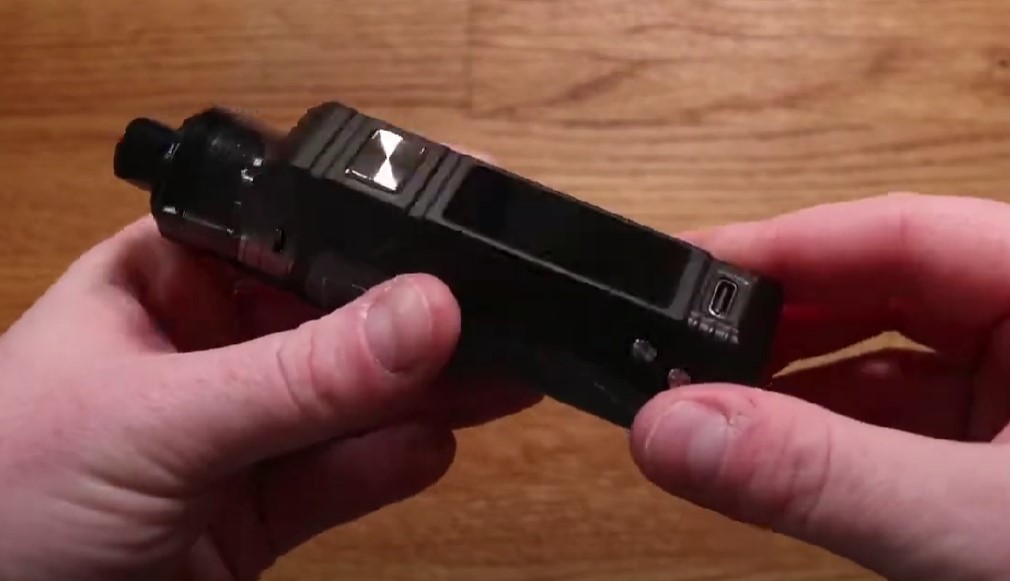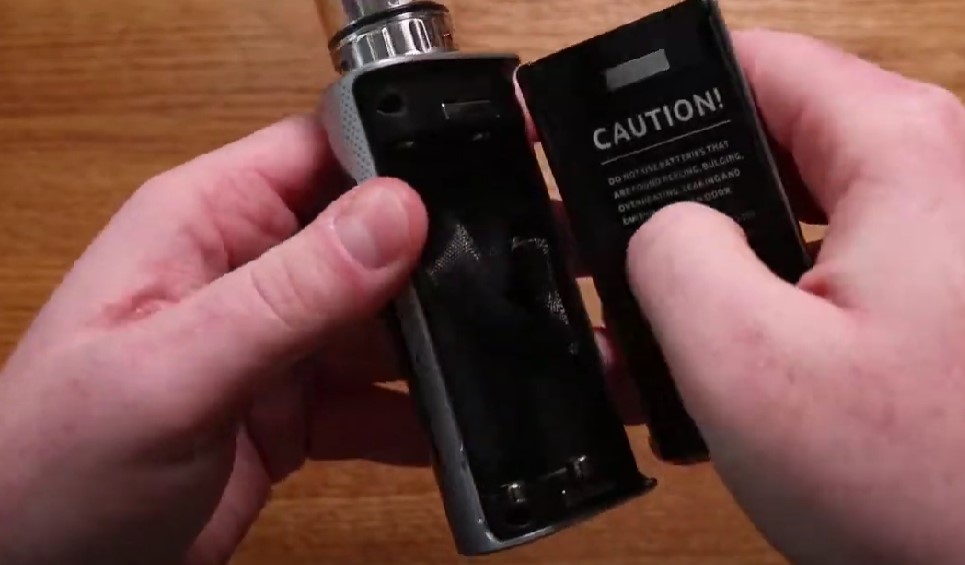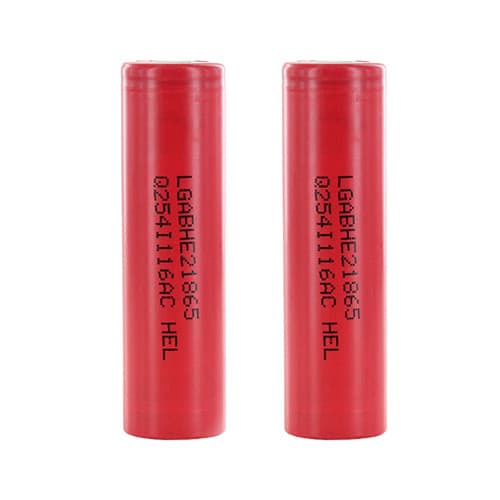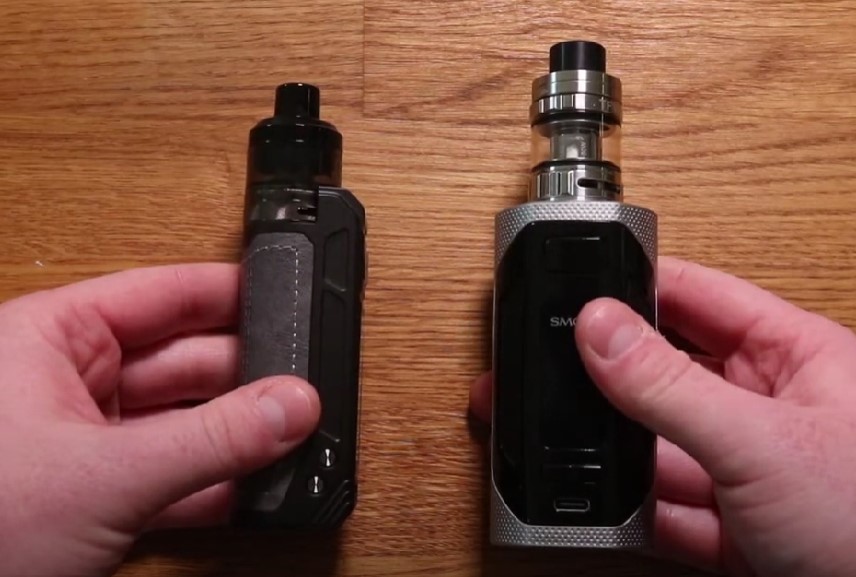Internal vs External Vape Batteries: Choosing the Best Option for You
Vaping devices come with different types of batteries, with internal and external options available to users. Internal vape batteries are built-in and non-removable, whereas external vape batteries are removable and can be replaced by the user. Choosing between internal and external vape batteries depends on the personal preferences of the vaper, as well as the device’s compatibility and specific requirements.
Internal batteries are convenient for users who prefer an easy-to-maintain vaping experience, as they do not require any additional purchasing or changing of batteries. On the other hand, external batteries can offer more customization and versatility in terms of power and battery life.
They also allow users to swap out drained batteries for fresh ones without waiting for the device to recharge. However, it is essential to understand battery safety and maintenance when using external vape batteries to ensure a safe and enjoyable vaping experience.
Table of Contents
Key Takeaways
- Vaping devices feature either internal, built-in batteries or removable, external batteries.
- Internal batteries provide simplicity and convenience, while external batteries offer customization and versatility.
- Proper battery safety and maintenance practices are crucial, especially when using external vape batteries.
NEW CUSTOMER DISCOUNT
Save 15%
15% OFF YOUR ENTIRE ORDER FOR NEW CUSTOMERS USE CODE WELCOME15!

Internal Vape Batteries
Basics of Internal Batteries
Internal vape batteries are usually built into vaping devices, such as vape pens, pod kits, and all-in-one devices. They are often rechargeable lithium-ion or lithium polymer batteries, with size and capacity typically ranging from 18350 to 20700 mAh. These batteries provide a reliable power source for the device, enabling a consistent power output for your vaping experience. Internal battery mods often have a USB port or charging port for easy charging, and they may also come with a charging cable.

Pros and Cons of Internal Batteries
| Pros of Internal Batteries: |
| Convenience: With no need to remove the battery for charging or replacement, internal batteries offer simplicity and ease of use. |
| Portability: Vaping devices with internal batteries tend to be more compact and lightweight, making them ideal for on-the-go usage. |
| Safety: Built-in vape batteries often have integrated safety features, such as short circuit protection and overcharge protection, ensuring a more secure vaping experience. |
| Cons of Internal Batteries: |
| Limited Lifespan: Like all rechargeable batteries, internal batteries will eventually lose their capacity over time, requiring you to replace the entire vaping device. |
| Downtime: When the battery is depleted, you’ll need to charge the device, which can take time and may interrupt your vaping sessions. |
| Less Customization: Internal battery mods offer limited options for adjusting power output or battery capacity since the battery is built into the device. |
Choosing an Internal Battery Vaping Device
When selecting an internal battery vaping device, consider the following factors:
| mAh Rating: This determines the battery life and capacity. Higher mAh ratings mean longer vaping times before needing to recharge. |
| Size and Portability: Choose a device that meets your needs in terms of size and convenience. Smaller devices like pod mods and vape pens are more portable but may have lower battery capacity. |
| Power Output: Some internal battery devices offer variable power outputs, allowing you to adjust the vaping experience to your liking. |
| Safety Features: Make sure your chosen device has built-in safety features, such as short-circuit protection and overcharge prevention. |
Overall, internal vape batteries offer a balance of convenience, safety, and portability, making them an attractive option for vapers of all experience levels. However, their limited lifespan and customization options may not be suitable for everyone. When weighing the advantages and drawbacks, consider your personal vaping preferences and requirements to make an informed decision.
External Vape Batteries
Understanding External Batteries
External vape batteries are removable and replaceable power sources for vape devices, such as box mods and pod mods. The most common sizes of external batteries are 18650, 20700, 21700, and 26650, with the numbers representing their dimensions in millimeters. These vape batteries are usually made of lithium-ion, which is known for its high energy density and stable power output.
External batteries differ from internal batteries, which are built into the vape device and non-removable. External vape batteries can be charged separately using an external charger, while internal batteries are charged through a charging port on the device.

Advantages and Disadvantages of External Batteries
| Advantages: |
| Replaceable: The primary advantage of external batteries is their replaceability. When your battery starts to wear out, you can simply replace it rather than purchasing a new vaping device. |
| Flexible power output: Using external batteries allows you to choose the power output that best suits your vaping needs by selecting from a range of battery capacities (mAh ratings). |
| Longer overall battery life: Since you can replace worn-out batteries, the overall lifespan of your vaping device may be extended significantly. |
| Upgrade options: As battery technology improves, you can upgrade to higher-capacity batteries without upgrading the entire device. |
| Disadvantages: |
| Size and weight: External battery mods are generally larger and heavier than devices with internal batteries, which may affect portability and convenience. |
| Maintenance required: External batteries need to be removed and charged separately, and proper battery safety precautions should be taken to avoid issues like short circuits and overcharging. |
Selecting an External Battery Mod
When choosing an external battery mod, consider the following factors:
- Battery size compatibility: Ensure the mod supports the size of the battery you plan to use, such as 18650, 20700, or 21700 batteries.
- Power output and capacity: Depending on your vaping preferences, you might prefer a mod with higher power output or longer battery life. Look for a mod that can support batteries with the desired mAh rating.
- Safety features: Choose a mod that comes with safety features such as short-circuit protection, overcharging protection, and temperature control to ensure the safe use of your external vape batteries.
- Portability and aesthetics: Consider the size, weight, and design of the mod to find one that suits your personal preferences and is comfortable for you to carry and use.
By understanding the differences between external and internal batteries and considering the pros and cons of each, you can make an informed decision when selecting an external battery mod for your vaping needs.
Battery Safety and Maintenance
Battery safety and maintenance is crucial for both internal and external vape batteries, including popular sizes like 18650, 20700, and 21700. Proper care of your vaping device ensures longevity, performance, and safety.
Proper Charging Practices
When charging your vape battery, it’s important to use the correct charging cable and follow the device manufacturer’s guidelines. For external batteries, using a smart charger is recommended, as it can prevent overcharging and prolong the life of your battery.
- Always use the charger that came with your device or one recommended by the manufacturer.
- Avoid leaving your batteries to charge unattended or overnight.
- Monitor the battery temperature during charging—stop charging if it becomes too hot.
- Disconnect your battery from the charger as soon as it’s fully charged to prevent overcharging.
Storage and Handling
Proper storage and handling of your vape batteries is essential to ensure safety and maintain battery capacity. Factors such as temperature, moisture, and physical protection should be considered when storing your batteries.
- Store batteries in a cool, dry place away from direct sunlight.
- Keep batteries away from sources of heat, flame, and metal objects.
- If your vaping device has a removable battery, take it out when not in use for extended periods.
- Transport batteries in protective cases to avoid damage or accidental contact with metallic surfaces that could cause short-circuiting.
- Regularly clean the battery and device’s contact points to prevent rust and maintain performance.
Signs of Battery Failure
Being aware of potential signs of failure is crucial for the safety of lithium-ion and lithium-polymer batteries found in vaping devices.
- Swelling: A swollen battery is a clear indicator of damage and should be replaced immediately.
- Leaking: If there’s noticeable liquid on or around your battery, it’s likely leaking and should be replaced.
- Decreased battery life: A battery with a significantly reduced capacity (mAh rating) is nearing the end of its life cycle and should be replaced.
- Physical damage: Cracks, dents, and rust are all signs that your battery is no longer safe to use.
Monitoring battery safety and performing regular maintenance can significantly extend the life of your vape and improve its performance. It’s essential to understand the features of your device, battery size, type, and capacity to make informed decisions regarding safe usage and maintenance practices.
Battery Types and Sizes
When selecting a vaping device, one of the most crucial aspects to consider is the type of battery it uses. The two main types of vape batteries are internal and external, each with its advantages and disadvantages, depending on the user’s preferences. This article will discuss the various sizes and types of vape batteries available.
18650 and 21700 Batteries
18650 batteries are the most common type of lithium-ion external vape batteries. They measure 18mm x 65mm and have a mAh rating that varies, typically between 2000 and 3600mAh. These rechargeable lithium-ion batteries are known for their versatility and safety features, such as integrated circuit (ICR) protection, which prevents overcharging and short-circuits. They are widely used in various vaping devices and battery mods. One downside, however, is that their capacity and power output may not be sufficient for more intense sub-ohm vaping.

On the other hand, 21700 batteries are slightly larger, measuring 21mm x 70mm, with a higher mAh rating of around 4000 to 5000mAh. This translates to a longer battery life and higher power output, making them ideal for advanced vaping devices and sub-ohm vaping. Additionally, they share similar safety features with 18650 batteries, like ICR protection. However, their larger size may make them incompatible with some devices designed for 18650 batteries.
20700 and 26650 Batteries
20700 batteries have measurements of 20mm x 70mm and offer an increased mAh rating of 3000 to 4250mAh. These lithium-ion external batteries provide more capacity and power output than 18650 batteries, making them suitable for use in high-current vaping devices. They also have similar safety features, like ICR and overcharge protection, which are essential for battery safety.

26650 batteries are some of the most powerful and largest vape batteries, measuring 26mm x 65mm. They have an impressive mAh rating of 4000 to 6000mAh, offering a significantly longer battery life. These external lithium-ion batteries cater to advanced vaping devices and sub-ohm vaping enthusiasts who require high power output. As with other lithium-ion batteries, they come equipped with safety features, such as ICR and overcharge protection.
Lithium Polymer Batteries
Lithium polymer batteries are another type of rechargeable battery commonly used as an internal battery in many vaping devices. They differ from lithium-ion batteries in their chemical composition and construction, which allows for a thinner, lightweight, and more flexible design. This makes them suitable for use in smaller and more compact vaping devices.
Lithium polymer batteries generally have a lower mAh rating than their lithium-ion counterparts, ranging from 900 to 2000mAh. This may result in a shorter battery life, but their compatibility with various devices and safety features, like temperature and voltage protection, make them a popular choice for many vapers.
In summary, the choice between internal and external vape batteries, as well as their sizes and types, ultimately depends on individual preferences, device compatibility, and vaping habits. It’s essential to consider factors such as size, capacity, power output, and safety features when selecting the most suitable battery for a vaping device.
Choosing the Right Battery for Your Vaping Device
Finding the right battery for your vaping device is crucial for both performance and safety. In this section, we’ll explore how to match the battery with your device’s wattage, understand battery life and capacity, and ensure compatibility with various vape mods.
Matching Battery to Device Wattage
An essential aspect of choosing a vape battery is ensuring the chosen battery can handle your device’s power output. Typically, vaping devices use 18650, 20700, or 21700 lithium-ion batteries. Each battery type can handle different wattage ranges, so it’s crucial to select the appropriate one for your device.
- 18650 batteries are commonly found in vaping devices with lower wattage ranges, usually below 100W.
- 20700 and 21700 batteries are more suitable for high-wattage devices, such as box mods and advanced vape kits, as they can handle wattages over 100W.
By understanding the power output of your vaping device and the wattage range supported by different battery types, you can choose the right battery for a safe and enjoyable vaping experience.
Understanding Battery Life and Capacity
Battery life and capacity are crucial factors to consider when selecting a vape battery. The battery capacity is measured in milliampere-hours (mAh) and determines how long a battery will last between charges.
- Higher mAh rating means longer battery life, allowing you to vape for more extended periods without needing a recharge.
- Lower mAh rating means the battery will drain faster but is often smaller in size, making it suitable for compact vaping devices and pod mods for increased portability.
Selecting a battery with a higher or lower mAh rating depends on your vaping habits and preferences regarding vaping time, downtime, and device size.
Battery Compatibility with Vape Mods
Vaping devices can have either internal or external batteries. Internal batteries are built into the device, while external batteries can be removed and replaced when they fail or their capacity diminishes.
- Internal battery mods are more compact, and their batteries are generally cheaper to replace. On the other hand, they typically have a shorter lifespan, and the device becomes unusable when the battery fails.
- External vape battery mods allow users to replace the battery easily, resulting in a more extended device life and reduced downtime when the battery needs charging or replacement.
When choosing between internal or external battery mods, consider factors like portability, battery life, and the ability to replace the battery.
Additionally, make sure that the vape battery is compatible with your device by checking its size, voltage, and type. A mismatched battery may result in poor performance, safety issues, or even damage to the device.
To achieve the best performance, use a reliable and powerful lithium-ion battery suited for your device’s specific wattage range. Always prioritize battery safety by opting for reputable brands, using a smart charger, and following the manufacturer’s recommendations for handling and charging. By understanding your device’s needs and choosing the right battery, you can enhance your vaping experience while ensuring device safety.
What to Consider When Upgrading a Vape Battery
Increased Power and Performance
When upgrading your vape battery, it’s essential to consider the increased power and performance you may need. Different battery sizes, such as 18350, 18650, 20700, and 21700, can provide varying levels of power output and wattage range. A higher wattage range means greater compatibility with various coil resistances, allowing for more flexibility in your vaping experience. The size of your battery directly affects the power output and performance of your device.
Battery Life and Charging Capabilities
Another crucial factor to consider is battery life and charging capabilities. Batteries with higher MAh (milliamp hours) ratings, such as the 20700 and 21700, typically offer more extended battery life than their smaller counterparts. Lithium-ion batteries, the most common type of vape battery, are known for their long-lasting performance. External battery mods allow users to swap batteries quickly, ensuring a consistent vaping experience without waiting for an internal battery to recharge. When upgrading, consider if you prefer a device with an internal or external battery based on your charging preferences and accessibility to a charging source.
| Battery Size | MAh Rating | Average Battery Life |
| 18350 | 700-1200 | 4-6 hours |
| 18650 | 1800-3500 | 6-8 hours |
| 20700 | 3000-4200 | 8-10 hours |
| 21700 | 3750-5000 | 10-12 hours |
Size and Portability of Vape Device
Finally, consider the size and portability of your vape device when upgrading your battery. Larger batteries, such as the 20700 and 21700, may provide increased power and battery life but can also result in a more substantial, less portable device. Smaller batteries, like the 18350 and 18650, can offer more compact devices but may compromise battery life and power output. Assess your priorities concerning power, performance, battery life, and portability to make the best decision for your vaping needs.
Browse popular vape collections:
- Nicotine Disposables
- 2000 Puff Nicotine Disposable Vapes
- 2500 Puff Nicotine Disposable Vapes
- 5000 Puff Nicotine Disposable Vapes
- 6000 Puff Disposable Nicotine Vapes
- 7000 Puff Nicotine Disposable Vapes
- Disposable Vape Deals
- Best Vape Brands
- 8000 Puff Nicotine Disposable Vapes
- 9000 Puff Nicotine Disposable Vapes
- 5% Nicotine Disposable Vapes
- Rechargeable Nicotine Disposable Vapes
- Vape Coils
- Dab Wax Pens
- Dab Wax Pen Battery
- Yocan Vapes
- Vape Cases
Frequently Asked Questions
What are the advantages of removable vape batteries?
Removable vape batteries, also known as external batteries, offer some benefits over internal batteries. One of the main advantages is the ability to carry spare batteries while on the go, allowing for extended vaping time without the need to recharge. External batteries also enable users to replace only the battery rather than the entire device when the battery’s performance declines.
How does battery life compare for internal and external batteries?
Battery life depends on factors such as the capacity, device usage, and charging cycles. In general, internal batteries typically have a limited lifespan, as they are subject to wear and degradation over time. External batteries may have a longer life, as they can be replaced easily, and users can opt for higher-capacity batteries if desired. However, both types require proper charging and care to maximize their lifespan.
Are there any safety concerns between the two types of vape batteries?
There are safety concerns with both types of batteries, but they differ in nature. Internal batteries require less handling, reducing the risk of damage or improper use. External batteries, on the other hand, need to be handled carefully to prevent damage, short-circuiting, or exposure to extreme temperatures. Both types should be used with the appropriate device specifications and follow the manufacturer’s guidelines for safe use and charging.
Which type of vape battery is more cost-effective in the long run?
The cost-effectiveness of a vape battery depends on factors such as usage patterns, device compatibility, and maintenance. For some users, an internal battery might be more affordable due to its simplicity and not having to purchase additional batteries. However, for heavy users or those who prefer customization, external batteries might prove more cost-effective, as they can be replaced individually without the need to replace the entire device.
Does the type of battery affect the performance of a vape device?
Battery type does play a role in the performance of a vape device. External batteries often allow for higher power output, which may provide a more satisfying vaping experience for some users. In contrast, internal batteries may have limited power output capabilities, which might be more suitable for users who prefer a lower power, stealthier vaping experience. The choice of battery type will depend on personal preferences and desired vaping style.
What factors should I consider when choosing a vape with a specific battery type?
When selecting a vape with a specific battery type, consider factors such as your vaping style, desired power output, portability, and budget. Users who desire a compact, low-maintenance option may prefer internal battery devices. Those who want more power, customization, and the ability to carry spare batteries might opt for devices with external batteries. Ensuring compatibility with your preferred device’s features and understanding safety recommendations is essential to make an informed decision.
Resources:
- https://www.hopkinsmedicine.org/health/wellness-and-prevention/5-truths-you-need-to-know-about-vaping
- https://www.cdc.gov/tobacco/basic_information/e-cigarettes/pdfs/ecigarette-or-vaping-products-visual-dictionary-508.pdfhttps://www.cdc.gov/tobacco/basic_information/e-cigarettes/pdfs/ecigarette-or-vaping-products-visual-dictionary-508.pdf
- https://www.cdc.gov/tobacco/basic_information/e-cigarettes/index.htm






